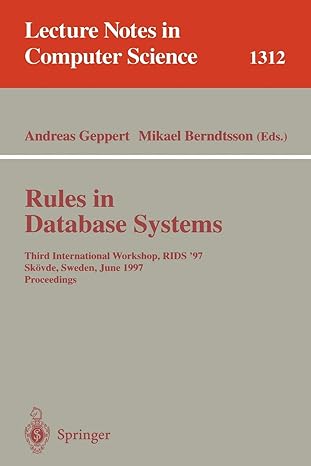CSE 341 Assignment 7 Question 3
Please write the answer for Question 3 in CODE. The starter code is provided below.
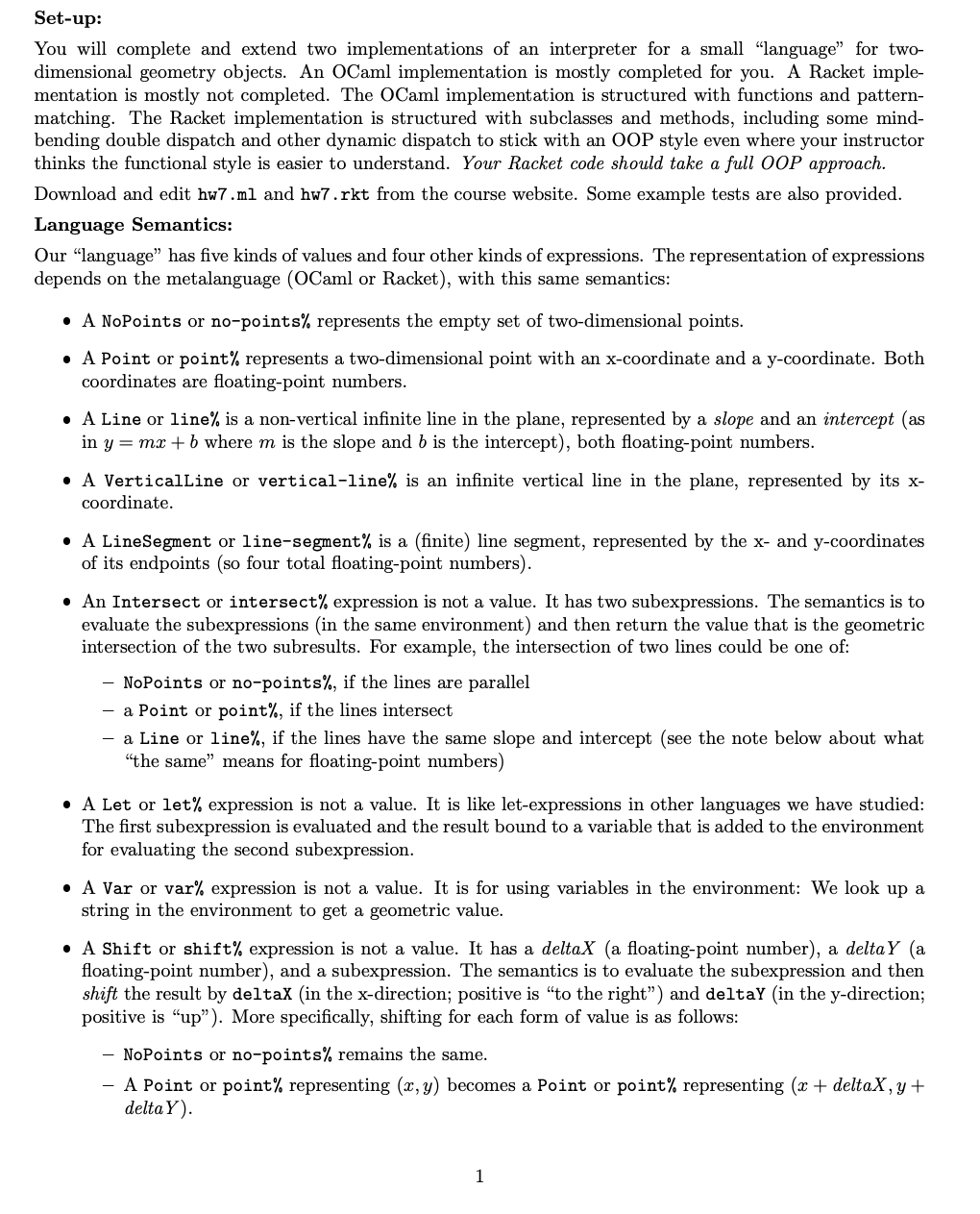
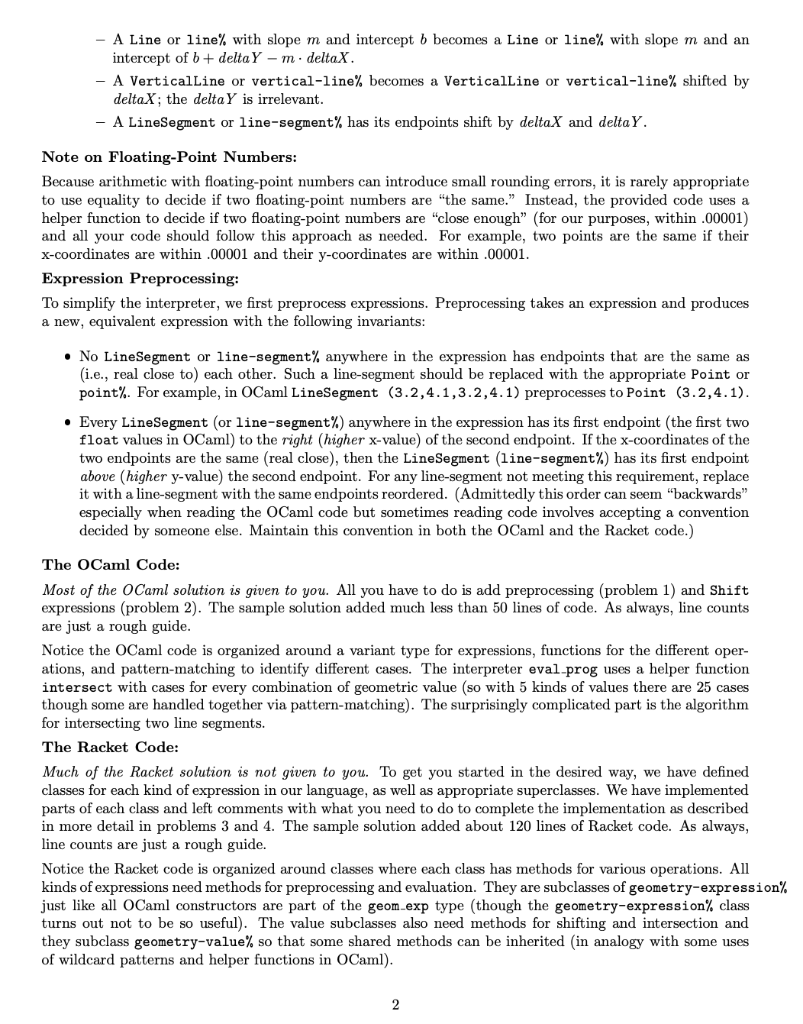
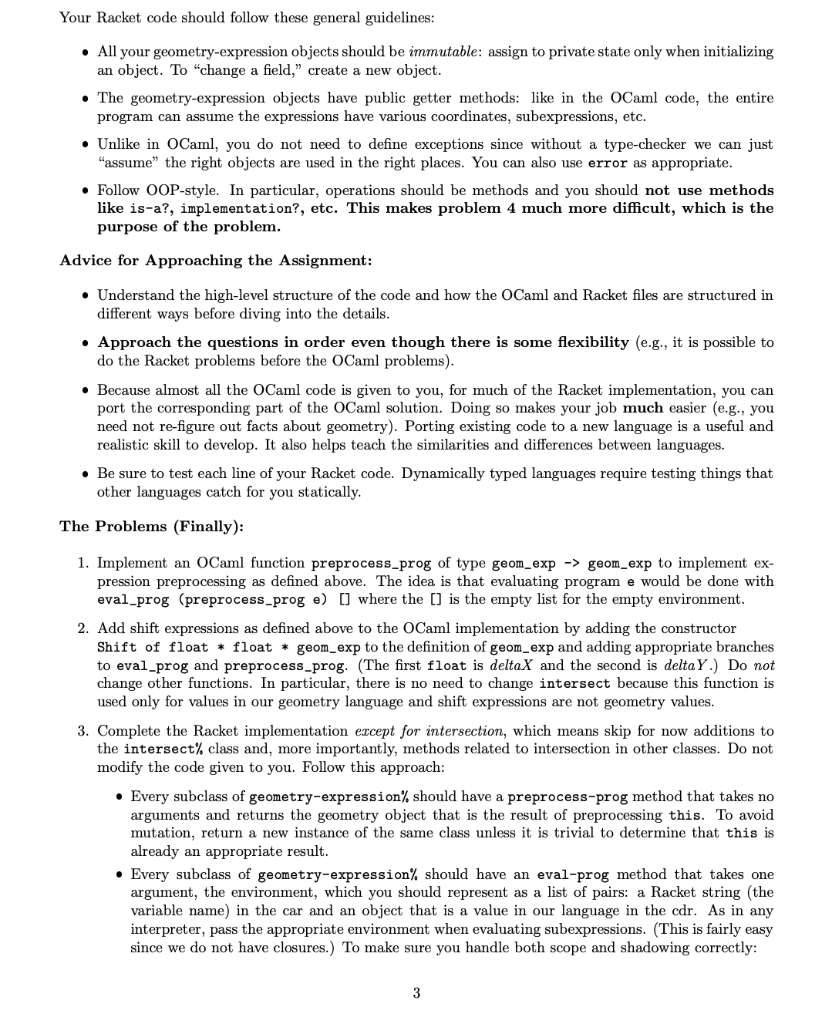
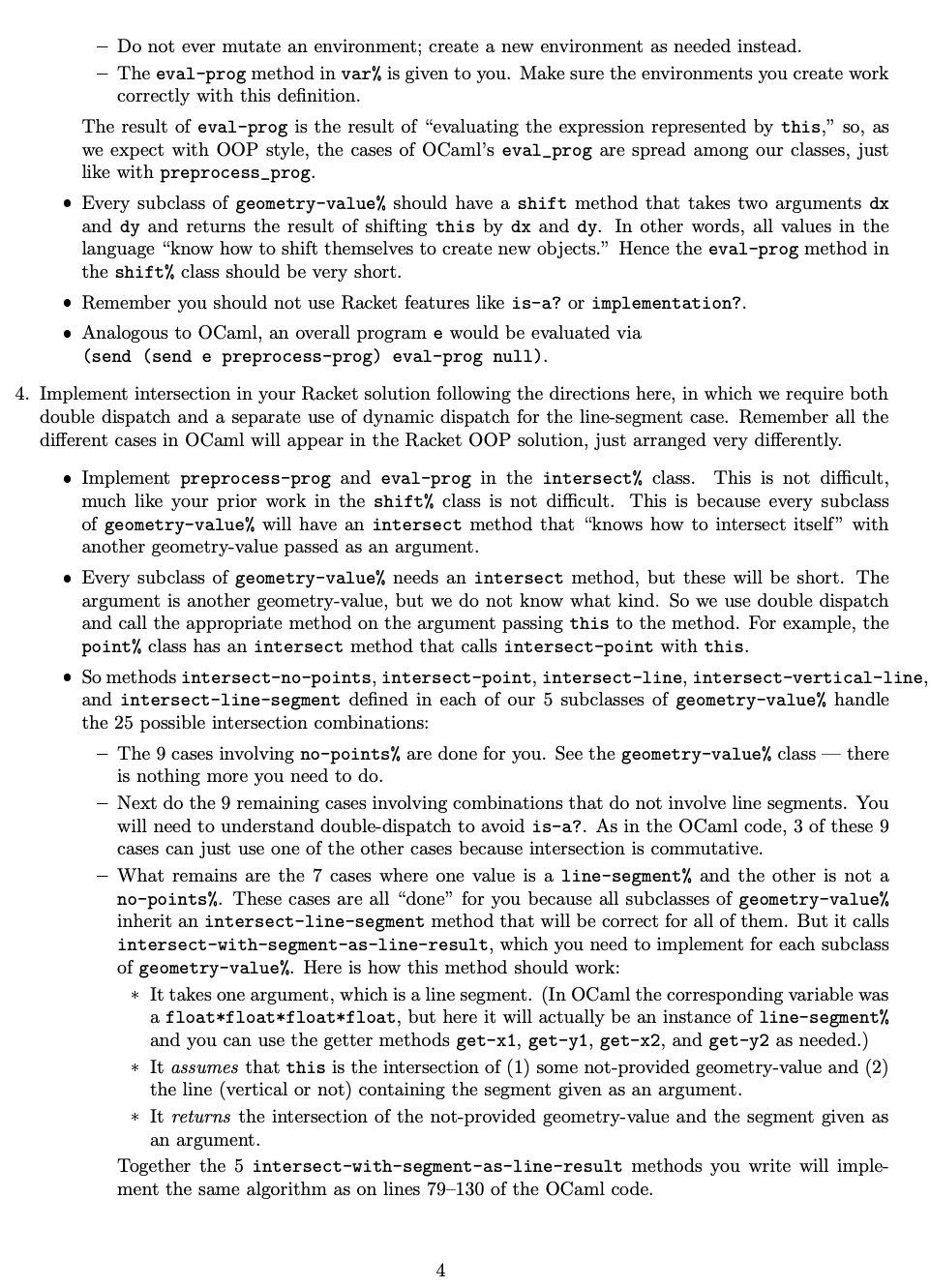

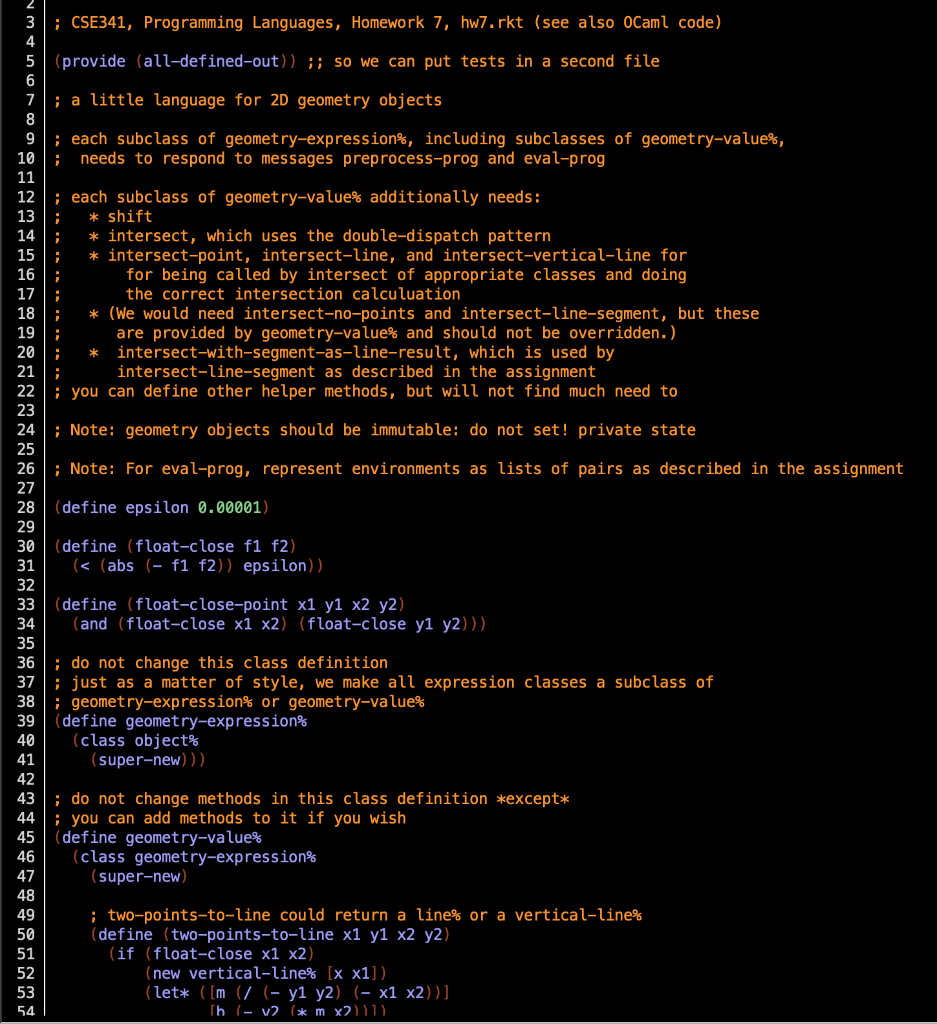
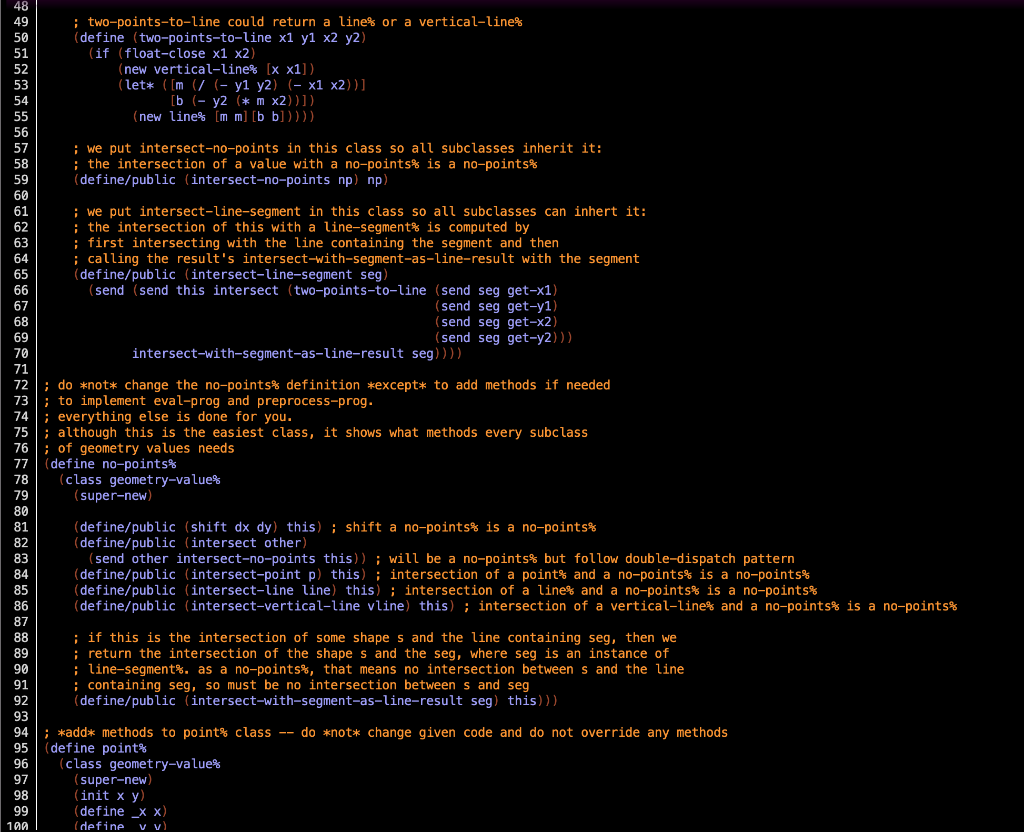
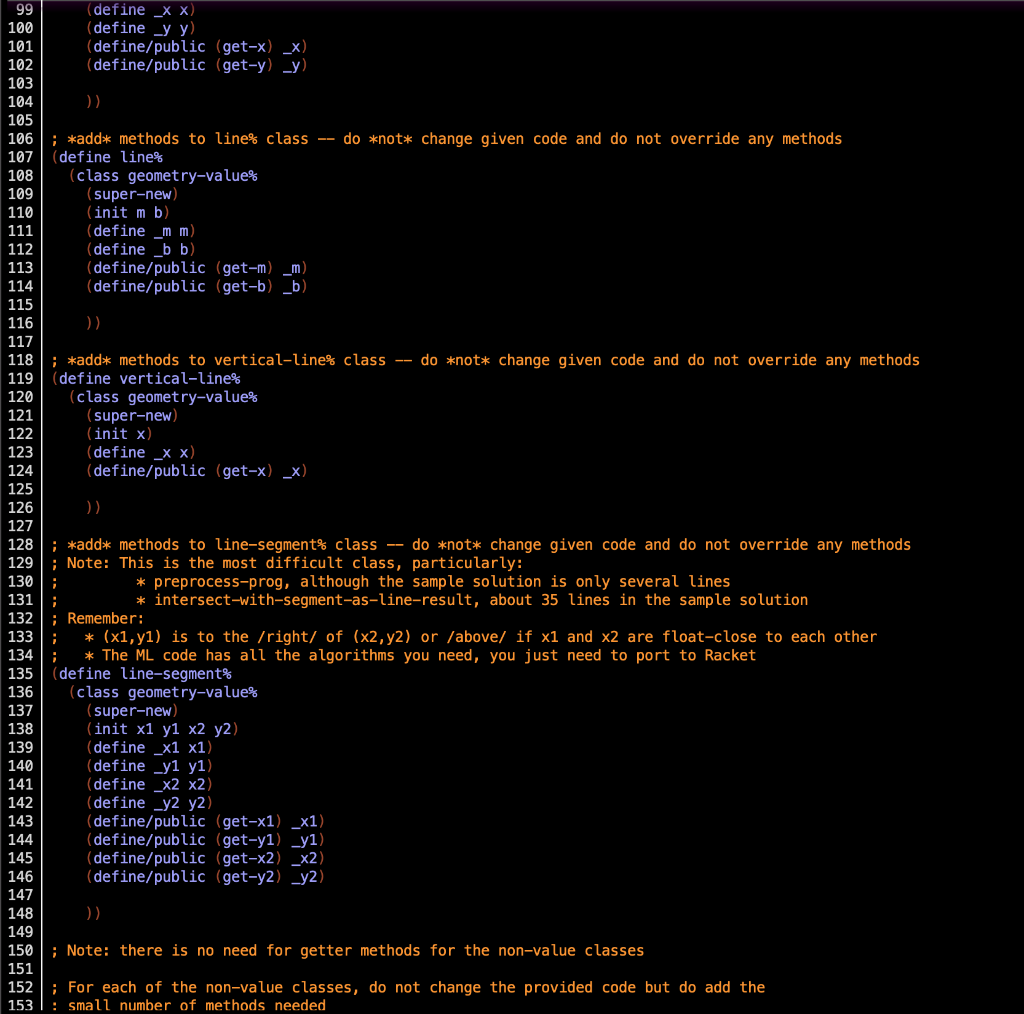
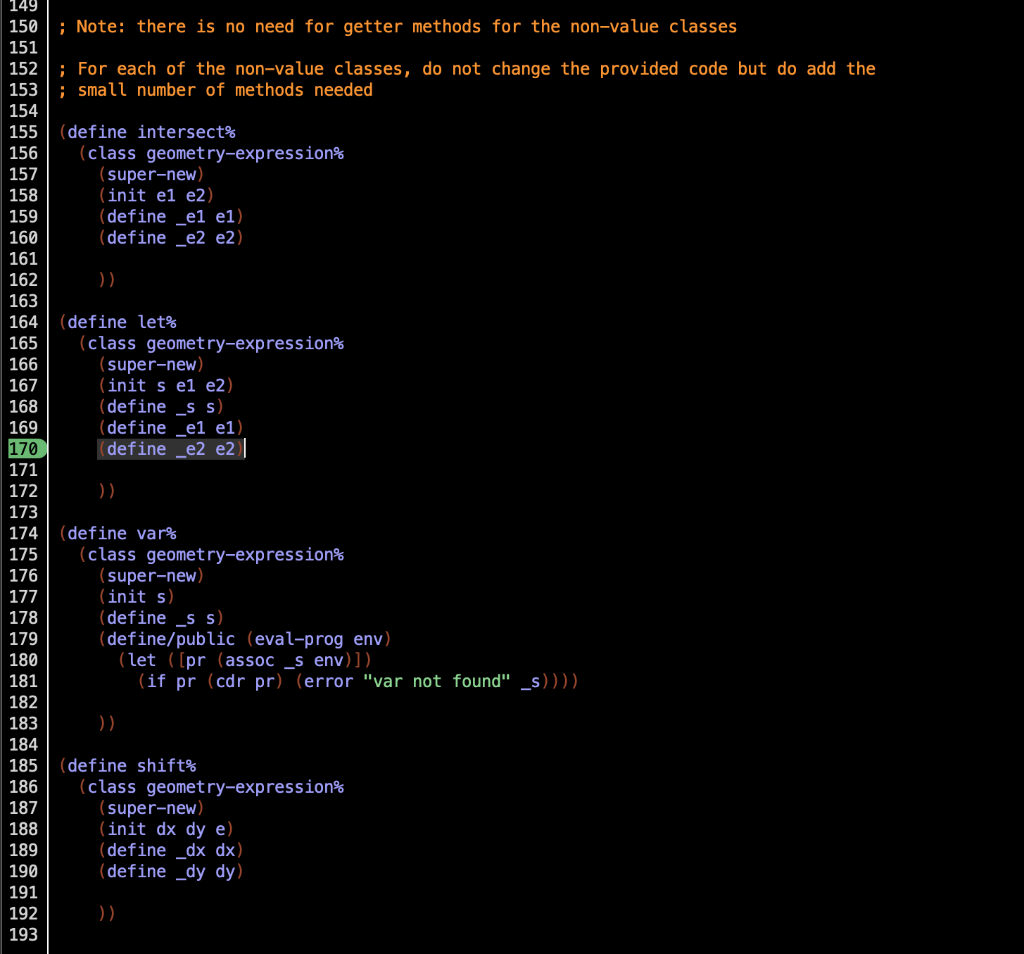
Set-up: You will complete and extend two implementations of an interpreter for a small "language" for twodimensional geometry objects. An OCaml implementation is mostly completed for you. A Racket implementation is mostly not completed. The OCaml implementation is structured with functions and patternmatching. The Racket implementation is structured with subclasses and methods, including some mindbending double dispatch and other dynamic dispatch to stick with an OOP style even where your instructor thinks the functional style is easier to understand. Your Racket code should take a full OOP approach. Download and edit hw7.ml and hw7.rkt from the course website. Some example tests are also provided. Language Semantics: Our "language" has five kinds of values and four other kinds of expressions. The representation of expressions depends on the metalanguage (OCaml or Racket), with this same semantics: - A NoPoints or no-points\% represents the empty set of two-dimensional points. - A Point or point\% represents a two-dimensional point with an x-coordinate and a y-coordinate. Both coordinates are floating-point numbers. - A Line or line\% is a non-vertical infinite line in the plane, represented by a slope and an intercept (as in y=mx+b where m is the slope and b is the intercept), both floating-point numbers. - A Verticalline or vertical-line\% is an infinite vertical line in the plane, represented by its xcoordinate. - A LineSegment or line-segment\% is a (finite) line segment, represented by the x- and y-coordinates of its endpoints (so four total floating-point numbers). - An Intersect or intersect\% expression is not a value. It has two subexpressions. The semantics is to evaluate the subexpressions (in the same environment) and then return the value that is the geometric intersection of the two subresults. For example, the intersection of two lines could be one of: - NoPoints or no-points %, if the lines are parallel - a Point or point %, if the lines intersect - a Line or line\%, if the lines have the same slope and intercept (see the note below about what "the same" means for floating-point numbers) - A Let or let\% expression is not a value. It is like let-expressions in other languages we have studied: The first subexpression is evaluated and the result bound to a variable that is added to the environment for evaluating the second subexpression. - A Var or var\% expression is not a value. It is for using variables in the environment: We look up a string in the environment to get a geometric value. - A Shift or shift % expression is not a value. It has a delta X (a floating-point number), a delta Y (a floating-point number), and a subexpression. The semantics is to evaluate the subexpression and then shift the result by deltaX (in the x-direction; positive is "to the right") and deltaY (in the y-direction; positive is "up"). More specifically, shifting for each form of value is as follows: - NoPoints or no-points\% remains the same. - A Point or point % representing (x,y) becomes a Point or point % representing (x+ deltaX, y+ deltaY) 1 - A Line or line\% with slope m and intercept b becomes a Line or line\% with slope m and an intercept of b+deltaYmdeltaX. - A Verticalline or vertical-line\% becomes a Verticalline or vertical-line\% shifted by deltaX; the delta Y is irrelevant. - A LineSegment or line-segment\% has its endpoints shift by deltaX and delta Y. Note on Floating-Point Numbers: Because arithmetic with floating-point numbers can introduce small rounding errors, it is rarely appropriate to use equality to decide if two floating-point numbers are "the same." Instead, the provided code uses a helper function to decide if two floating-point numbers are "close enough" (for our purposes, within .00001) and all your code should follow this approach as needed. For example, two points are the same if their x-coordinates are within .00001 and their y-coordinates are within .00001. Expression Preprocessing: To simplify the interpreter, we first preprocess expressions. Preprocessing takes an expression and produces a new, equivalent expression with the following invariants: - No Linesegment or line-segment\% anywhere in the expression has endpoints that are the same as (i.e., real close to) each other. Such a line-segment should be replaced with the appropriate Point or point\%. For example, in OCaml LineSegment (3.2,4.1,3.2,4.1) preprocesses to Point (3.2,4.1). - Every LineSegment (or line-segment\%) anywhere in the expression has its first endpoint (the first two float values in OCaml ) to the right (higher x-value) of the second endpoint. If the x-coordinates of the two endpoints are the same (real close), then the LineSegment (line-segment\%) has its first endpoint above (higher y-value) the second endpoint. For any line-segment not meeting this requirement, replace it with a line-segment with the same endpoints reordered. (Admittedly this order can seem "backwards" especially when reading the OCaml code but sometimes reading code involves accepting a convention decided by someone else. Maintain this convention in both the OCaml and the Racket code.) The OCaml Code: Most of the OCaml solution is given to you. All you have to do is add preprocessing (problem 1) and Shift expressions (problem 2). The sample solution added much less than 50 lines of code. As always, line counts are just a rough guide. Notice the OCaml code is organized around a variant type for expressions, functions for the different operations, and pattern-matching to identify different cases. The interpreter eval-prog uses a helper function intersect with cases for every combination of geometric value (so with 5 kinds of values there are 25 cases though some are handled together via pattern-matching). The surprisingly complicated part is the algorithm for intersecting two line segments. The Racket Code: Much of the Racket solution is not given to you. To get you started in the desired way, we have defined classes for each kind of expression in our language, as well as appropriate superclasses. We have implemented parts of each class and left comments with what you need to do to complete the implementation as described in more detail in problems 3 and 4. The sample solution added about 120 lines of Racket code. As always, line counts are just a rough guide. Notice the Racket code is organized around classes where each class has methods for various operations. All kinds of expressions need methods for preprocessing and evaluation. They are subclasses of geometry-expressio: just like all OCaml constructors are part of the geom_exp type (though the geometry-expression\% class turns out not to be so useful). The value subclasses also need methods for shifting and intersection and they subclass geometry-value\% so that some shared methods can be inherited (in analogy with some uses of wildcard patterns and helper functions in OCaml. 2 Your Racket code should follow these general guidelines: - All your geometry-expression objects should be immutable: assign to private state only when initializing an object. To "change a field," create a new object. - The geometry-expression objects have public getter methods: like in the OCaml code, the entire program can assume the expressions have various coordinates, subexpressions, etc. - Unlike in OCaml, you do not need to define exceptions since without a type-checker we can just "assume" the right objects are used in the right places. You can also use error as appropriate. - Follow OOP-style. In particular, operations should be methods and you should not use methods like is-a?, implementation?, etc. This makes problem 4 much more difficult, which is the purpose of the problem. Advice for Approaching the Assignment: - Understand the high-level structure of the code and how the OCaml and Racket files are structured in different ways before diving into the details. - Approach the questions in order even though there is some flexibility (e.g., it is possible to do the Racket problems before the OCaml problems). - Because almost all the OCaml code is given to you, for much of the Racket implementation, you can port the corresponding part of the OCaml solution. Doing so makes your job much easier (e.g., you need not re-figure out facts about geometry). Porting existing code to a new language is a useful and realistic skill to develop. It also helps teach the similarities and differences between languages. - Be sure to test each line of your Racket code. Dynamically typed languages require testing things that other languages catch for you statically. The Problems (Finally): 1. Implement an OCaml function preprocess_prog of type geom_exp geom_exp to implement expression preprocessing as defined above. The idea is that evaluating program e would be done with eval_prog (preprocess_prog e) [] where the [] is the empty list for the empty environment. 2. Add shift expressions as defined above to the OCaml implementation by adding the constructor Shift of float * float * geom_exp to the definition of geom_exp and adding appropriate branches to eval_prog and preprocess_prog. (The first f loat is deltaX and the second is delta Y.) Do not change other functions. In particular, there is no need to change intersect because this function is used only for values in our geometry language and shift expressions are not geometry values. 3. Complete the Racket implementation except for intersection, which means skip for now additions to the intersect\% class and, more importantly, methods related to intersection in other classes. Do not modify the code given to you. Follow this approach: - Every subclass of geometry-expression\% should have a preprocess-prog method that takes no arguments and returns the geometry object that is the result of preprocessing this. To avoid mutation, return a new instance of the same class unless it is trivial to determine that this is already an appropriate result. - Every subclass of geometry-expression\% should have an eval-prog method that takes one argument, the environment, which you should represent as a list of pairs: a Racket string (the variable name) in the car and an object that is a value in our language in the cdr. As in any interpreter, pass the appropriate environment when evaluating subexpressions. (This is fairly easy since we do not have closures.) To make sure you handle both scope and shadowing correctly: 3 - Do not ever mutate an environment; create a new environment as needed instead. - The eval-prog method in var\% is given to you. Make sure the environments you create work correctly with this definition. The result of eval-prog is the result of "evaluating the expression represented by this," so, as we expect with OOP style, the cases of OCaml's eval_prog are spread among our classes, just like with preprocess_prog. - Every subclass of geometry-value\% should have a shift method that takes two arguments dx and dy and returns the result of shifting this by dx and dy. In other words, all values in the language "know how to shift themselves to create new objects." Hence the eval-prog method in the shift % class should be very short. - Remember you should not use Racket features like is-a? or implementation?. - Analogous to OCaml, an overall program e would be evaluated via (send (send e preprocess-prog) eval-prog null). 5. Challenge Problem: Make a third version of your solution in Java. Follow the structure of your Racket solution, with no use of Java's instanceof or type casts. Use abstract methods as necessary for type-checking. Turn-in Instructions: Upload four files to Gradescope: - The OCaml and Racket files with your solutions - OCaml and Racket files used for testing - If you do the challenge problem, turn in your Java files as well















